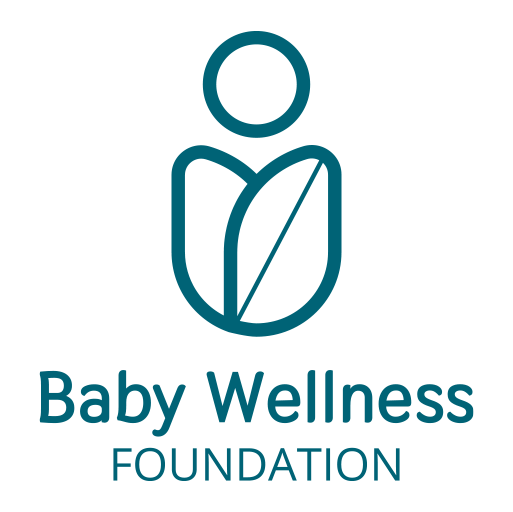Approfondimenti scientifici
Newborn Well-being and Environmental Quality: From Smoke to Domestic Pollutants
During pregnancy, exposure to tobacco smoke represents a significant risk factor for maternal-fetal health. Toxic substances found in smoke, including nicotine, carbon monoxide, and polycyclic aromatic hydrocarbons, easily cross the placental barrier, reducing the supply of oxygen and nutrients to the fetus. This can lead to serious consequences such as miscarriage, preterm birth, low birth weight, and intrauterine growth restriction.
In newborns exposed to smoke in utero, the risk of sudden infant death syndrome (SIDS), respiratory diseases, and neurological development disorders is increased. Even passive smoke exposure after birth has harmful effects, impairing lung function and increasing the incidence of respiratory infections, middle ear infections, and asthma. Quitting smoking during pregnancy is therefore a crucial measure to protect the baby’s health and ensure a favorable intrauterine environment for development.

Complementary Feeding and Water Quality
During the introduction of complementary feeding, infants are particularly sensitive to the quality of food and water. The immaturity of the enzymatic and immune systems, combined with greater exposure per unit of body weight, increases vulnerability to contaminants and pathogens.
For this reason, it is essential to:
- Boil water for at least 3 minutes before using it to prepare baby food and formula, to eliminate bacteria (Escherichia coli, Listeria, Salmonella) and viruses (Norovirus, Rotavirus).
- Monitor water quality, avoiding sources potentially contaminated with nitrates, heavy metals (lead, arsenic, mercury), pesticides, and microplastics, as they can negatively impact neurological and metabolic development.
Safe Water for Infants from the 6th Month
- Tap water: must be drinkable and free of contaminants; if necessary, boil it.
- Bottled water: choose mineral waters with low sodium content (<20 mg/L) and nitrates (<10 mg/L), suitable for preparing baby foods.
- Avoid uncertified domestic filters, which can alter water composition without ensuring real purification.
Quality of the Domestic Environment
The environment in which the newborn lives plays a crucial role in their health. The respiratory and immune systems of infants, still under development, make them especially susceptible to indoor pollutants.
Cooking and Ventilation
During cooking, especially with gas stoves, carbon monoxide (CO), nitrogen oxides (NOx), and fine particles (PM2.5) can be released. An efficient kitchen hood with adequate extraction reduces the accumulation of these harmful compounds, protecting the infant from potential respiratory irritation, asthma, and allergies.
Paints and Coatings
Synthetic paints may contain volatile organic compounds (VOCs) like benzene and formaldehyde, which release vapors for weeks. It is advisable to use water-based paints certified for low VOC emissions to ensure a healthier environment.
Fragrances and Deodorizers
Many air fresheners contain phthalates and chemical solvents that may act as endocrine disruptors. It is preferable to avoid them or replace them with natural essential oils, used in moderation and in well-ventilated spaces.
Toys, Stuffed Animals, and Plastic Materials
Everyday objects such as stuffed animals and plastic utensils can also contain harmful substances. Stuffed toys tend to accumulate dust, mites, and mold and may be treated with azo dyes, flame retardants (PBDEs), or phthalates. It is advisable to choose certified, washable products made from natural materials.
Plastic and Bisphenol A (BPA)
Bisphenol A (BPA) is a chemical compound found in some plastics, known for its ability to disrupt the endocrine system. Although it has been banned in many infant products, alternatives like BPS and BPF are still in use and may have similar effects.
Therefore, in general, it is better to opt for:
- Stainless steel or food-grade silicone tableware and cutlery
- Toys free of heavy metals and phthalates
Carpets and Air Quality
Carpets and rugs, while providing comfort, can be a significant source of indoor pollutants, especially for children who spend a lot of time on the floor. The main risks include:
- Fine particulate matter (PM10, PM2.5): accumulates in carpets and can be easily inhaled.
- Allergens: dust mites, mold, pet dander, and pollen concentrate in fabrics.
- Chemical substances:
- Volatile Organic Compounds (VOCs): released from synthetic carpet materials and cleaning products, may irritate airways and affect the central nervous system.
- Flame Retardants (PBDEs, TCEP): used in fire-treated carpets, are endocrine disruptors that can interfere with hormonal development in early childhood.
- Pesticides and Heavy Metals: carpets can accumulate pesticide residues and traces of heavy metals.
Practical Tips for a Healthier Home Environment
- Choose natural fiber rugs untreated with chemicals.
- Vacuum frequently with HEPA-filter-equipped devices to trap allergens and ultrafine particles.
- Avoid wearing shoes indoors to reduce the deposit of pollutants on carpets.
- Wash carpets regularly with natural cleaners.
- Ensure good ventilation to reduce the buildup of VOCs and improve air quality.
- Use an air purifier with a HEPA filter, which captures microscopic airborne particles, especially…
Associazione Italiana Medici per l’Ambiente (ISDE Italia) & Associazione Culturale Pediatri (ACP). (2025). Tossicità nei giocattoli: PFAS e bisfenoli pericolosi per i bambini.
Centers for Disease Control and Prevention (CDC). (2020). Childhood lead poisoning prevention: protecting children from exposure to lead-based paint and other sources.
Environmental Protection Agency (EPA). (2019). America’s children and the environment: measures for contaminants, exposures, and health.
European Environment Agency (EEA). (2018). Air pollution and children’s health: exposure, health effects and policy implications.
Microbiologia Italia. (2024). Gli effetti dell’inquinamento ambientale sulla salute dei bambini.
Ministero della Salute. (2023). Impatto dell’inquinamento indoor sulla salute della popolazione.
Organizzazione Mondiale della Sanità (OMS). (2018). Inquinamento atmosferico e salute dei bambini: prescrivere aria pulita.
Save the Children Italia. (2023). I rischi dell’inquinamento per la salute dei bambini.
Società Italiana delle Cure Primarie Pediatriche (SICuPP). (2024). Prodotti chimici e salute dei bambini: la necessità di nuove leggi.
Società Italiana per le Malattie Respiratorie Infantili (SIMRI). (2024). Inquinamento indoor e salute respiratoria nei bambini: cause, rischi e prevenzione.
The Lancet Commission on Pollution and Health. (2018). Pollution, health, and the planet: time for decisive action.
United Nations Children’s Fund (UNICEF). (2019). The impact of air pollution on children’s health in the Asia-Pacific region.
